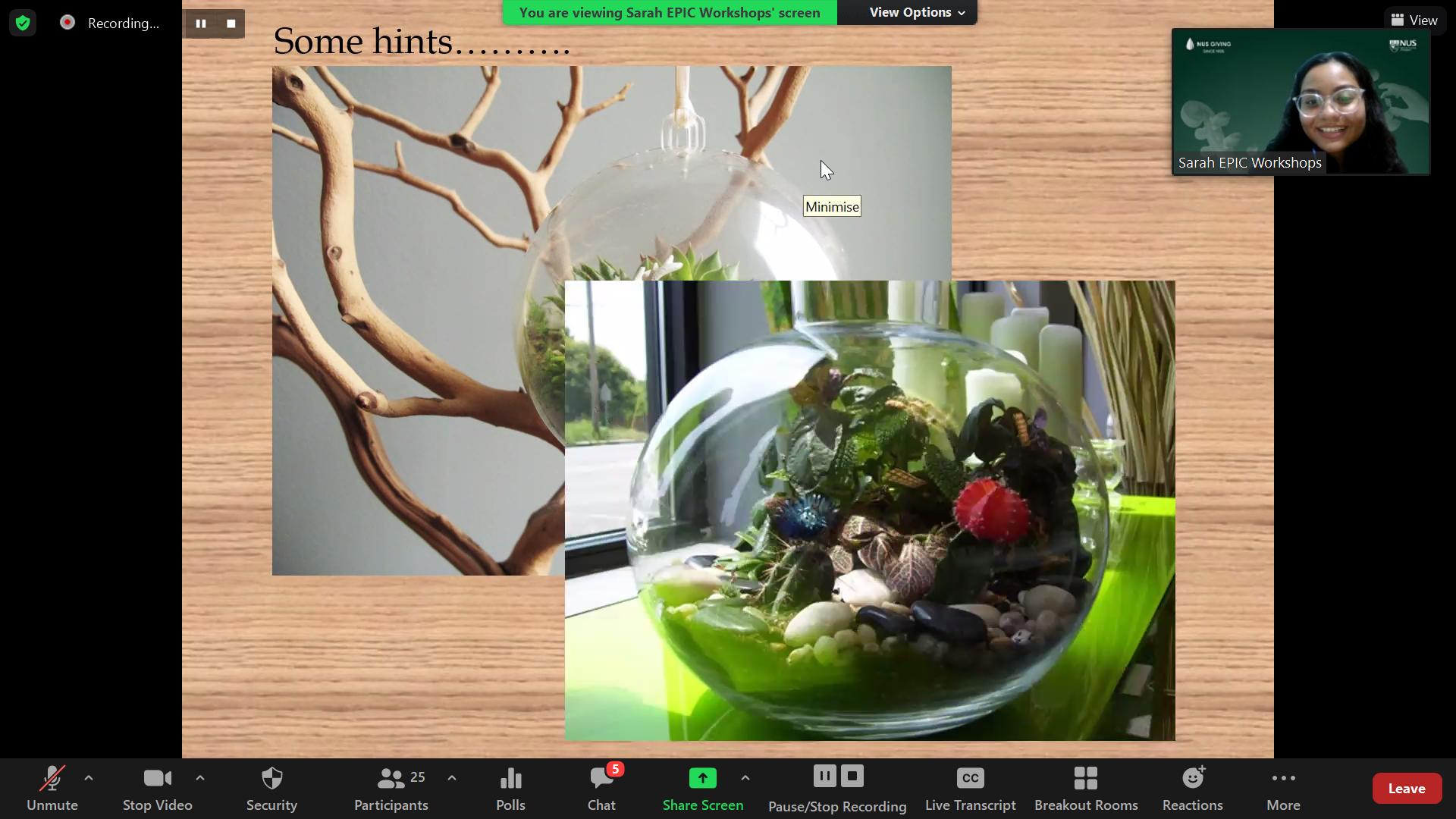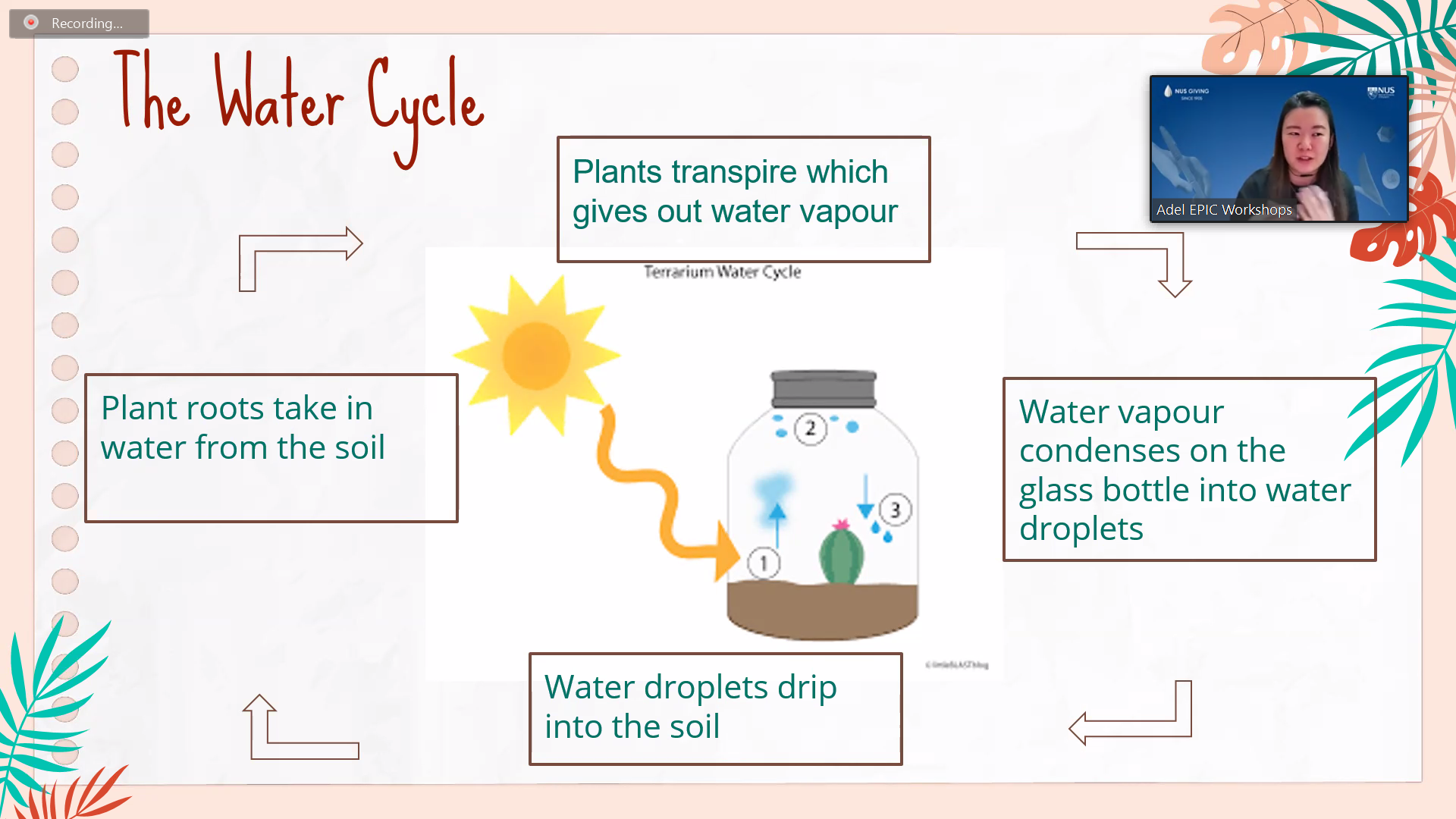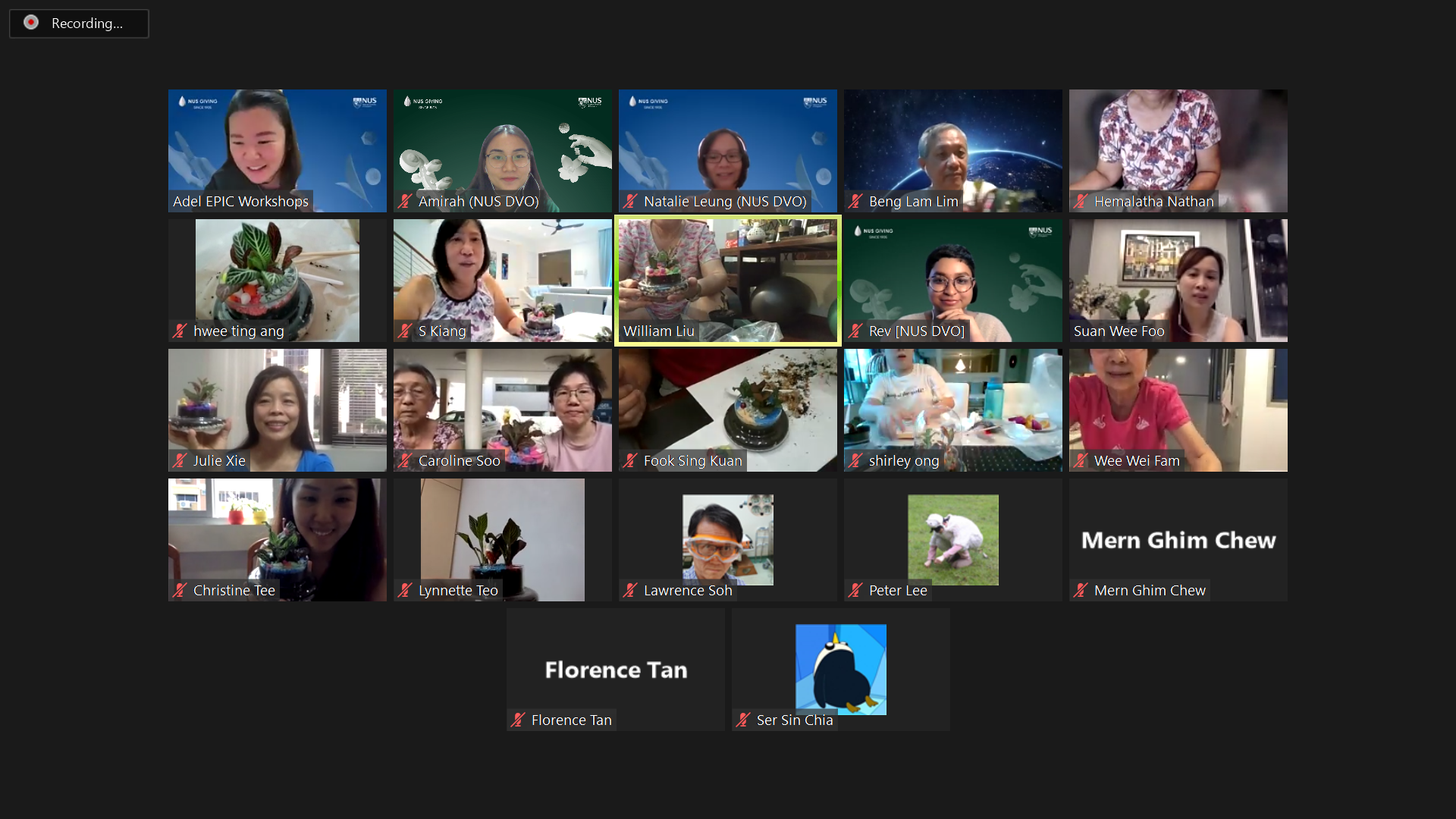In appreciation of their contributions, Annual Giving donors were treated to a special virtual terrarium-making workshop.
 Beautiful terrariums shown to workshop participants as part of an interactive quiz
Beautiful terrariums shown to workshop participants as part of an interactive quiz
Every contribution made to the National University of Singapore (NUS) goes a long way in creating fertile grounds for our students to learn and grow. It also enables the University to continue being at the forefront of excellence in education, research and innovation. In a way, donors are the gardeners of our future generations.
As a show of appreciation to our donors, the Annual Giving team at the NUS Development Office organised virtual terrarium-making workshops for 80 donors in November. Guided by professional instructors, the donors built mini-gardens, nestled in glass jars, in the comfort of their homes.
Terrariums are miniature plant ecosystems. They require relatively little care as compared to potted plants, which make them perfect for time-strapped city dwellers.
A terrarium can largely survive on its own because of its self-sustaining ecosystem that is calibrated to effectively replicate the necessary natural cycle for a thriving community of plant organisms.
“The terrarium is a mini-ecosystem inside a transparent glass jar. Plants make their own food; we do not need to feed them. All they need is a little bit of light. Plants alternate between taking in and giving out two kinds of gases: oxygen and carbon dioxide. The exchange of these two gases creates a good circulation of air inside the jar; therefore, the plants will not run out of air,” explained the instructors.
“When plants take in water, they will give out water from their leaves in the form of water vapour. This vapour will evaporate and condense on the side of the jar, and slowly fall back down to the soil, providing water for the plants,” they elaborated.
 Infographic of the water cycle shown to donors at the terrarium workshop
Infographic of the water cycle shown to donors at the terrarium workshopAfter the introduction on terrariums, the donors had the chance to hone their green fingers and creativity. Fashioning a terrarium with the DIY kits that were delivered to their homes, they first layered stones, dried moss and soil into the glassware, before inserting the Fittonia plant into the soil. They then topped it off with coloured sand, gravel and animal figurines as decorations.
The instructors explained the rationale behind the order of the layers. The bottom layer of stones drains away excess water in the soil layer, preventing root rot. The next layer of moss acts as a barrier between the soil and the stones, so as to prevent the plants from drowning. The plant is housed in the nutrient-rich soil layer.
The instructors recommended placing terrariums in a cool, indoor area where there is no direct sunlight. Placing your terrariums in the kitchen, or next to a heat-emitting computer, is not encouraged, as the glass surface of the terrarium jar will magnify heat and increase the internal temperature of the terrarium. Plants are intolerant to higher temperature and overheating can cause them to become dehydrated and wither. While a terrarium is generally self-sustaining, there are some tips to ensure a thriving ecosystem.
The instructors’ advice is to open the lid, and air the terrarium for three days. On the fourth day, water the plants with five tablespoons, or eight full sprays of water. Also, ensure that the lid is tightly covered. This care routine should be repeated every month.
“I want to emphasise that low maintenance does not mean no maintenance. Just like the police say that low crime does not mean there is no crime. You still have to take care of [the terrarium], just not as often,” the instructors concluded.

Donors proudly holding up their final terrarium creations to the camera at the end of the workshop.






